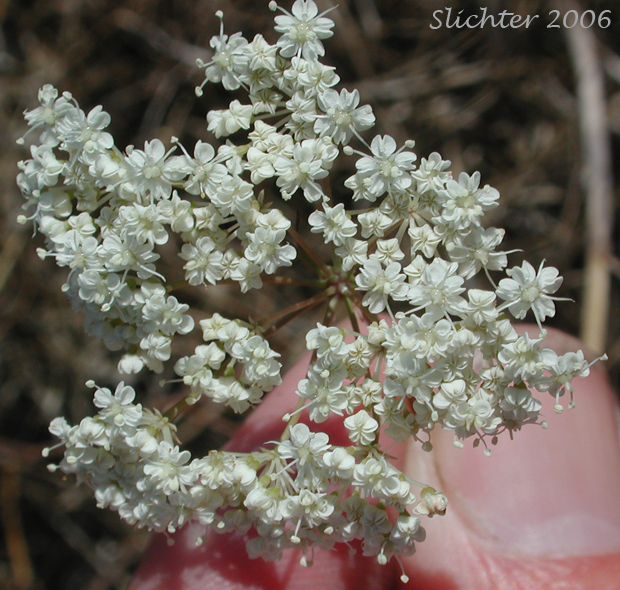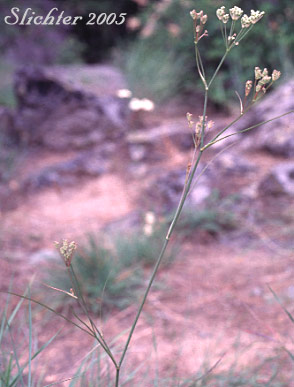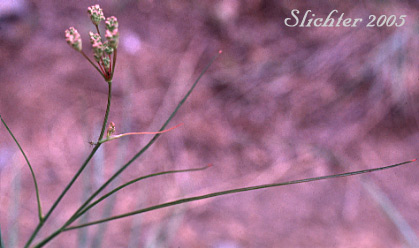
 The
photo at right shows the upper leaves and several umbels of yampah as seen along
the Chief Joseph Trail in the Eagle Cap Wilderness just west of Wallowa Lake.......July
27, 1997. The photo clearly shows the multiple umbels on the same stem.
The
photo at right shows the upper leaves and several umbels of yampah as seen along
the Chief Joseph Trail in the Eagle Cap Wilderness just west of Wallowa Lake.......July
27, 1997. The photo clearly shows the multiple umbels on the same stem.
Also known as western false caraway and squawroot, yampah is a glabrous perennial wildflower with a slender erect, sinuous stem from 30-100 cm high arising from a cluster of fleshy roots. The leaves are pinnately compound (or occasionally bipinnately compound) and measure from 10-20 cm long with wide petioles. The few, narrowly linear leaflets are 5-15 cm long (See photo above.). The several leaves are evenly spaced along the stems and are only slightly reduced in size upwards on the stem. The lower leaves often wither by the time of flowering.
The inflorescence consists of 3-10 umbels with 8-16 rays measuring up to 6 cm long. Typically, the umbels are each subtended by several awl-shaped bracts. The umbellets are each subtended by several narrow bractlets while the pedicels are 4-6 mm long. The flowers vary from white to pinkish in color and the petals usually have 5-7 evident veins from the base and are notched at the tip. The fruits are broadly oval and measure from 1-3.5 mm long and about as wide. The surface of the fruit is covered with minute ribs.
Yampah may be found on moist to dry, rocky hillsides, woodlands or in moist to dry meadows from the foothills to about 2500 meters of elevation in the mountains.
Yampah may be found from southern British Columbia south to the east of the Cascade Mts. to northern California and east to the Snake River Plain and Caribou Range of Idaho and northern Nevada and northern Utah. It is found further eat to central Colorado, western South Dakota and southwestern Saskatchewan.
It may be found in the Columbia River Gorge between the elevations of 100'-3000' from near Cape Horn east to the crest of the Columbia Hills in the eastern Columbia River Gorge.
